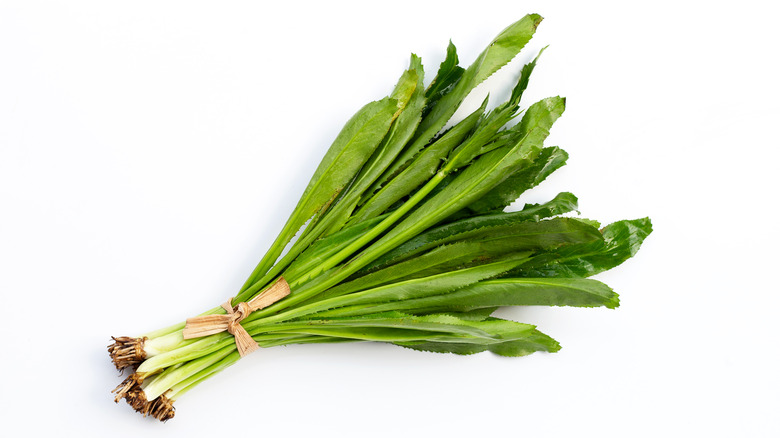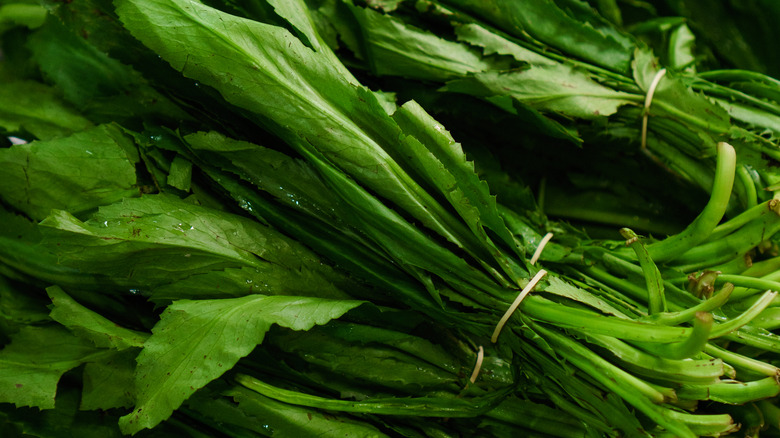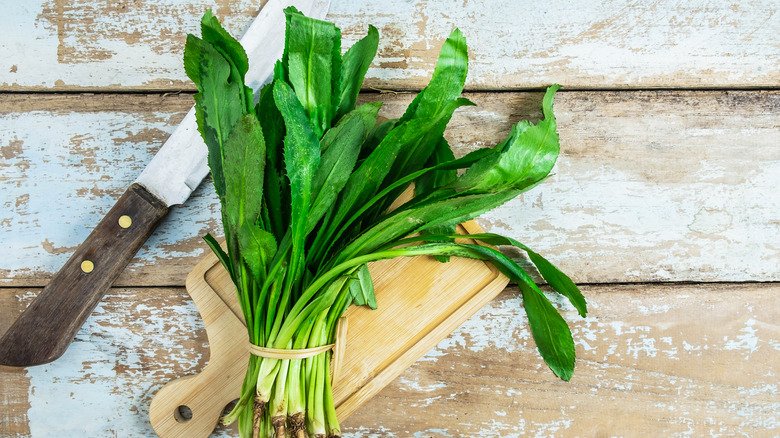What Is Culantro, And What Can You Do With It?
Recao, ngò gai, shado beni – there are plenty of ways to identify the bold, flavorful herb culantro. Peppery, citrusy, and earthy, culantro is an exciting herb to add to your seasoning arsenal. Although hard to find in the standard American supermarket, culantro is almost always in stock in Latin American and Asian markets and is an essential ingredient to both regions' cuisines. Used to season a range of savory dishes including meats, beans, rice, and more, culantro is bound to change the way you cook.
Though it's commonly mistaken for cilantro, culantro is in a league of its own as a long-leaf herb with serrated edges that lends an earthy, slightly citrusy flavor to savory meals. While some have a tendency to compare it to cilantro, culantro varies drastically in its appearance, taste, and use in cooking. As a highly prized ingredient in Latin American and Caribbean cuisine, culantro is an essential herb to keep stocked in your kitchen.
What is culantro?
Culantro can best be identified by its dark green, long, and sturdy serrated leaves, giving it the nickname "saw leaf herb," according to the University of Florida. A cousin to cilantro, culantro is part of the Apiaceae family, which features other flavorful plant relatives such as dill, anise, celery and more. Although culantro's flavor profile tends to be a lot stronger, it is thought to have a similar scent profile to cilantro.
Culantro is often confused with cilantro, but the two plants are not the same. Culantro has long, flat leaves compared to cilantro's smaller, thinner ones. Cook's Illustrated notes that this — along with culantro's tender stems, which aren't separated from the leaves at all — can make culantro easier to prep. The herb is also used differently in cooking than cilantro. Since it's a key ingredient in many traditional Latin American and Caribbean dishes, it's worth taking some time to learn how to cook with culantro and optimize its flavors in your next dish.
How to cook with culantro
Cooking with culantro is easy and adds a unique and delicious flavor to a wide range of dishes. On its own, culantro's raw flavor is powerfully sharp and peppery. Needless to say, a little bit goes a long way. This is why culantro can also often be found in marinades, like sofrito, or sauces to flavor savory dishes. When used raw, culantro can also be an excellent, flavorful addition to salsa, guacamole, and other dips. In these instances, it's best to finely chop culantro before mixing it in.
Culantro is also popular in rice, stews, and other hearty, savory dishes. In this application, culantro is commonly added whole and cooked down to release its flavors. If you can't find culantro, The New York Times recommends substituting a combination of cilantro and parsley for a similar flavor, while Cook's Illustrated suggests simply using an equal amount of cilantro.


